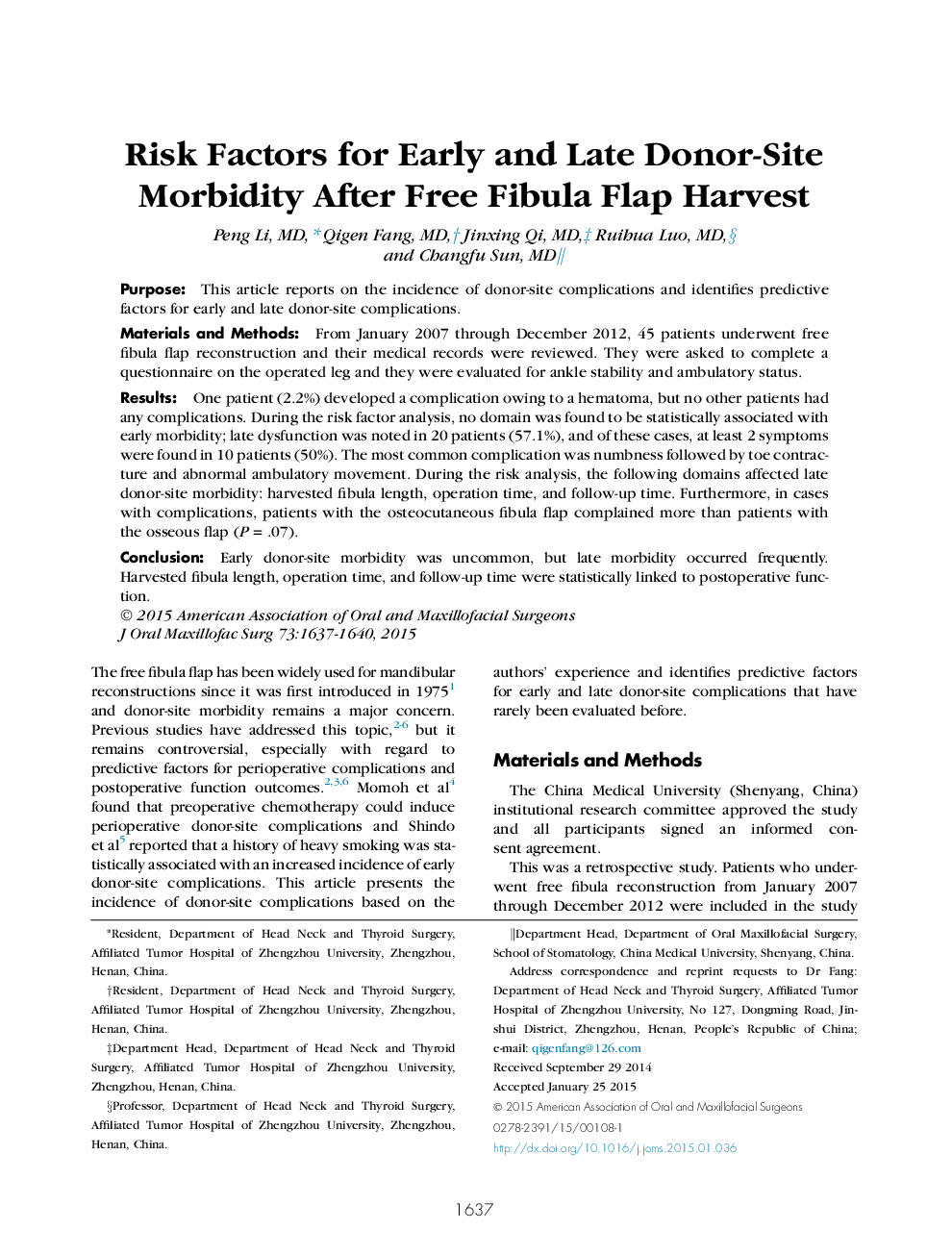| Article ID | Journal | Published Year | Pages | File Type |
|---|---|---|---|---|
| 3152339 | Journal of Oral and Maxillofacial Surgery | 2015 | 4 Pages |
PurposeThis article reports on the incidence of donor-site complications and identifies predictive factors for early and late donor-site complications.Materials and MethodsFrom January 2007 through December 2012, 45 patients underwent free fibula flap reconstruction and their medical records were reviewed. They were asked to complete a questionnaire on the operated leg and they were evaluated for ankle stability and ambulatory status.ResultsOne patient (2.2%) developed a complication owing to a hematoma, but no other patients had any complications. During the risk factor analysis, no domain was found to be statistically associated with early morbidity; late dysfunction was noted in 20 patients (57.1%), and of these cases, at least 2 symptoms were found in 10 patients (50%). The most common complication was numbness followed by toe contracture and abnormal ambulatory movement. During the risk analysis, the following domains affected late donor-site morbidity: harvested fibula length, operation time, and follow-up time. Furthermore, in cases with complications, patients with the osteocutaneous fibula flap complained more than patients with the osseous flap (P = .07).ConclusionEarly donor-site morbidity was uncommon, but late morbidity occurred frequently. Harvested fibula length, operation time, and follow-up time were statistically linked to postoperative function.
